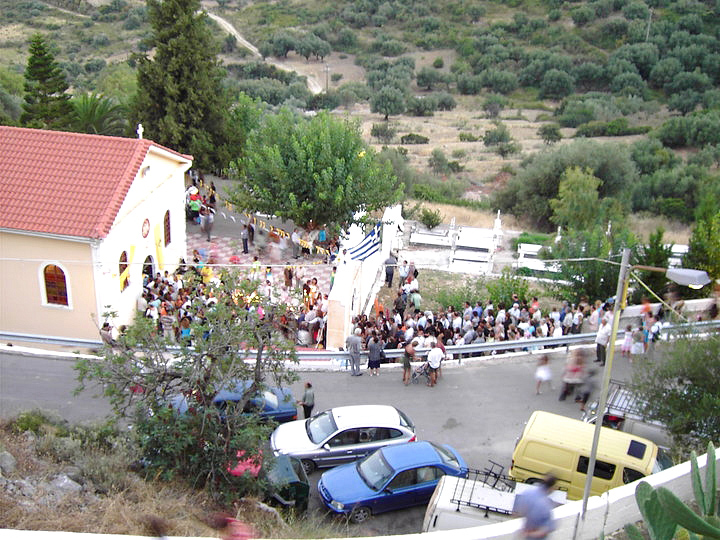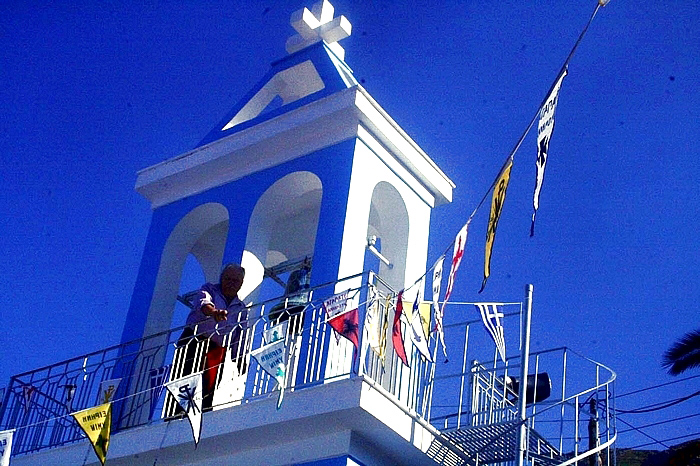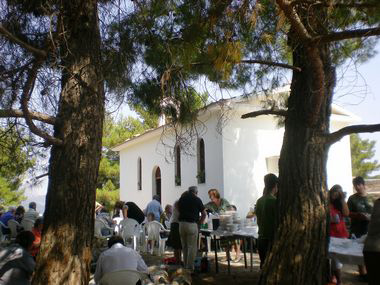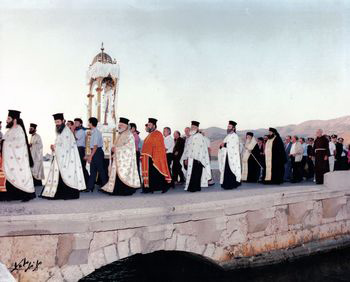Kefalonia - Tradition
The beginnings of the history of Kefalonia are lost in the mists of time. Civilization has left the modern generations with thousands of years worth of varied cultural elements, whose presence is intense and easily recognizable today.
• Archaeological sites of great interest, from the prehistoric city’s walls, Mycenaean cemeteries, classical Tetrapolis of Kefalonia and Roman villas, dating back to the last years of the Roman Era.
• Churches and Monasteries constituting elements and components not only of the religious expression of Kefalonia, but also of its culture, as they are made with special attention to Art - so that today they are monuments and touristic attractions. The same has happened of course with their valuable 'content' - the Byzantine and post-Byzantine icons of immeasurable value.
• The museums of Kefalonia encompass the culture of the island in different forms: archaeological findings from the plethora of excavations are presented at the Archaeological Museum of Argostoli, the whole history of modern Kefalonia at the Folklore Museum, you will also find museums of special interest - all this variety is difficult to leave any visitor indifferent.
• Libraries containing thousands of volumes of books covering a long period of human history, from the 16th century to today. It is another example of the love of the inhabitants of Kefalonia for Culture.
• Centers of culture, which are simultaneously attractions, such as the Municipal Theatre of Kefalos and the Philharmonic Academy of Kefalonia.
• And finally, the sights of Kefalonia: monuments, statues, recreational areas, major works of the 19th century, lighthouses, natural monuments and geological paradoxes, rarely does a single island combine such different and unique attractions that cover the entire spectrum of Culture.
-
Fest in Virgin Mary Fidoussa in Markopoulo

Markopoulo of Kefalonia is the result of the large settlement of 1507 that the Venetians attempted to create in Elios and Pronnoi. The most important attraction of Markopoulo and one of the most remarkable sites of the island is the Virgin Mary Fidousa or Lagouvarda known for the appearance of snakes all over Greece and abroad Looking back in time we find traditions that have been spread by mouth and help us to realize the rather random location of this temple , and look for the miraculous appearance of snakes. In this temple on August 14th there is a big festival where crowds and vendors are gathered and entertain. Read more
-
-
Fest in the church of Valeriano

In the church of the village of Valeriano, which is dedicated to the memory of the great apostles of Christianity, Peter and Paul, the holy fest takes place on June 29th for the two great apostolic forms that their work and their actions spread Christianity in many parts of humanity. Read more
-
-
Fest of Saints Fanentes in Sami

The three local saints of Kefalonia, the three Saints Fanentes: Gregory, Theodore, and Leon celebrate on the moveable celebration of Orthodoxy, the day of All Saints. A big festival with food and plenty of wine takes place in the courtyard of the church. Read more
-
-
Fest in Agrilia
On 1 May morning, the traditional festival takes place at the Monastery of Agrilia with grilled food, wine and dancing with orchestra. On evening the events are transferred to the central square of Sami, with dance bands and concerts. Read more
-
Fest in Troianata
On August 12th there is the feast of Moustalevria in the village of Troiannata. It has a rich cultural program with revival of pressing grapes and traditional dances. Read more
-
Fest of Farsa
On August 7th the annual traditional festival of Saint Christoforos takes place in Farsa. Read more
-
Fest of Savior
The annual traditional festival of the Savior takes place on August 6th in Davgata. Read more
-
Fest of Saint Panteleimonas
The fest takes places on July 27thin Thinia and more particulary in Kontogourata. Read more
-
Fest of Diotissa
The feast of Virgin Mary Diotissa takes place on the islet of Zeus, located to the south of Kefalonia. At 7 am, the boat from the port of Pessada starts on the day of the feast and transfer people to the island. Here there are the treats such as traditional “riganada” and other delicacies, under the big tent that shades the courtyard near the church after the liturgy. Read more
-
Fest of Saint Paraskevi
In Kefalonia the Saint that is worshiped the most after Virgin Mary is Saint Paraskevi on July 26th. In the village of Atheras a single village nestled in the north of the peninsula of Paliki a feast takes place for the guests in a coastal place on the beach of Atheras. Read more
-
Fest of Drapaniotissa

On September 24th in accordance with the calendar of the Orthodox Church "Virgin Mary Myrtidiotissa" celebrates. Every time the caretakers of the cemetery follow the custom of past and are prepared for the holy feast. After vespers and the divine liturgy of the feast in the afternoon the litany of the icon starts from the church of Drepano, passes the bridge, continues to Saint Spyridon and gets into pilgrimage. Read more
-
-
Fest of Lamia
On September 8th Virgin Mary is celebrated in several monasteries. One of these celebrations is the Virgin Mary Lamia in Dilinata. In the courtyard of the monastery a large festival is held and is considered the most important of the entire summer and probably the last big one, in chronological order, before on October 20th. Read more
-
Fest of Saint Gerasimos
On August 16th, the local Saint Gerasimos and the monastery of Omala celebrates. The biggest holiday in Kefalonia is on August 15th, but a day later. This day is marked by the death of the Saint. Thousands people come to venerate the relics of the saint in the newly built temple. Believers wish each other living long. The celebration begins in the afternoon of the previous day with the liturgy. It is the biggest festival of the island that lasts two days. Read more
-
Fest of Virgin Mary in Themata
The Monastery of Virgin Mary Themata stands on a plateau at half height of Mountain of Agia Dinati in Pylaros, On Tuesday after the Easter a festival is held outside the church. The great table is early ready for the local soup of meat with celery and other herbs. The entertainment ends with music and dancing. Read more




